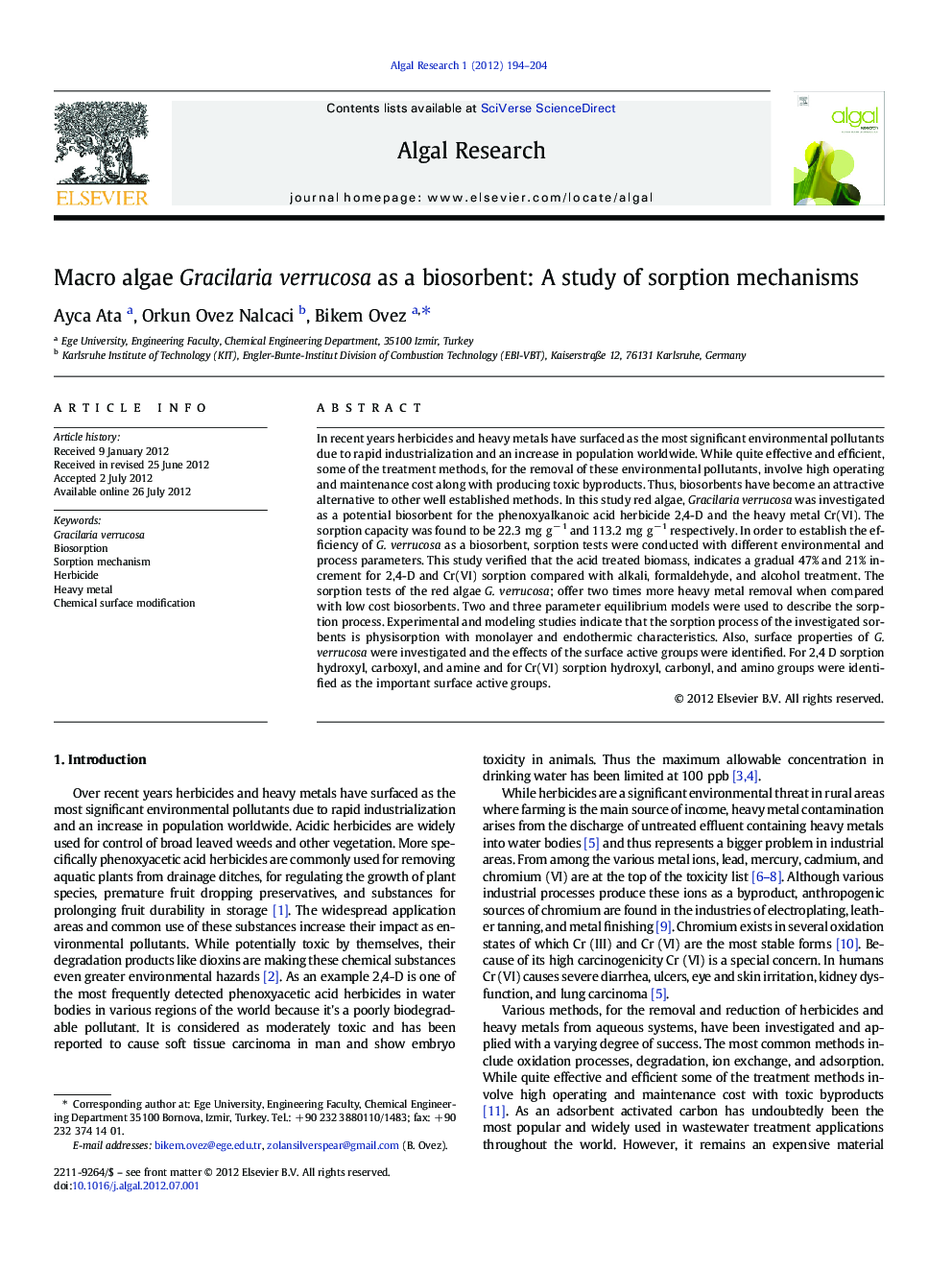| Article ID | Journal | Published Year | Pages | File Type |
|---|---|---|---|---|
| 10687576 | Algal Research | 2012 | 11 Pages |
Abstract
In recent years herbicides and heavy metals have surfaced as the most significant environmental pollutants due to rapid industrialization and an increase in population worldwide. While quite effective and efficient, some of the treatment methods, for the removal of these environmental pollutants, involve high operating and maintenance cost along with producing toxic byproducts. Thus, biosorbents have become an attractive alternative to other well established methods. In this study red algae, Gracilaria verrucosa was investigated as a potential biosorbent for the phenoxyalkanoic acid herbicide 2,4-D and the heavy metal Cr(VI). The sorption capacity was found to be 22.3 mg gâ 1 and 113.2 mg gâ 1 respectively. In order to establish the efficiency of G. verrucosa as a biosorbent, sorption tests were conducted with different environmental and process parameters. This study verified that the acid treated biomass, indicates a gradual 47% and 21% increment for 2,4-D and Cr(VI) sorption compared with alkali, formaldehyde, and alcohol treatment. The sorption tests of the red algae G. verrucosa; offer two times more heavy metal removal when compared with low cost biosorbents. Two and three parameter equilibrium models were used to describe the sorption process. Experimental and modeling studies indicate that the sorption process of the investigated sorbents is physisorption with monolayer and endothermic characteristics. Also, surface properties of G. verrucosa were investigated and the effects of the surface active groups were identified. For 2,4 D sorption hydroxyl, carboxyl, and amine and for Cr(VI) sorption hydroxyl, carbonyl, and amino groups were identified as the important surface active groups.
Keywords
Related Topics
Physical Sciences and Engineering
Energy
Renewable Energy, Sustainability and the Environment
Authors
Ayca Ata, Orkun Ovez Nalcaci, Bikem Ovez,
